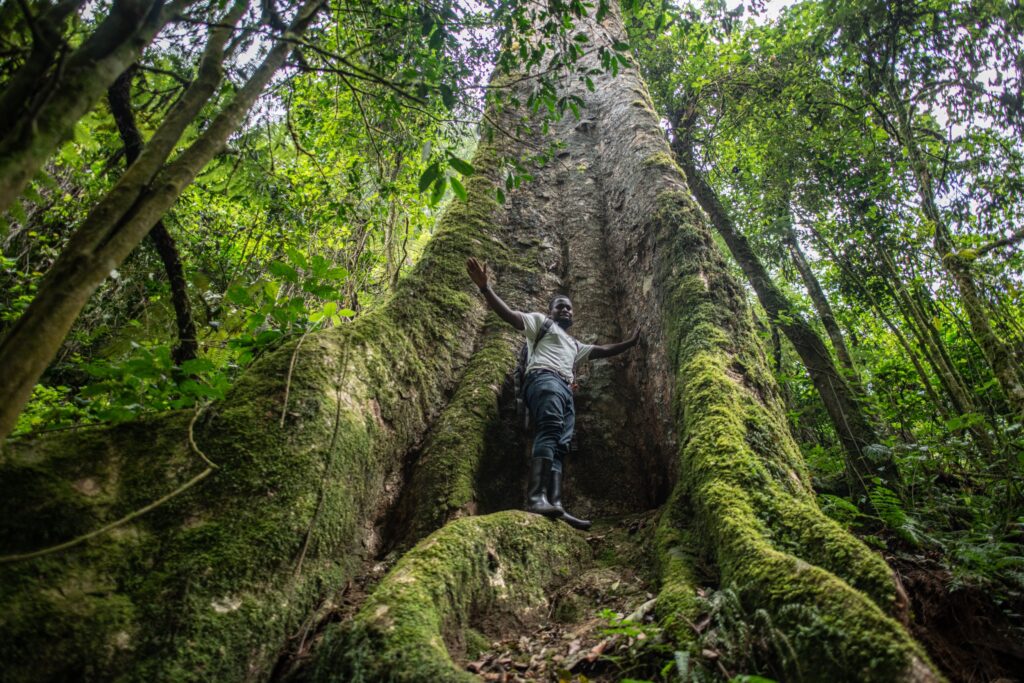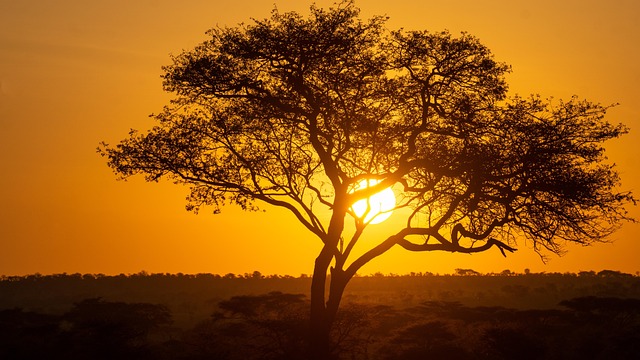In the Udzungwa Mountains of Tanzania, scientists discovered ancient trees that have never been documented before. Given the name Tessmannia princeps, some of these trees may be 3,000 years old and tower above the forests below. In fact, they may be among the oldest and tallest trees in the tropics. Amazingly, even local botanists had never documented them before. However, these ancient trees need to be protected, as only 100 mature trees have been found so far.
The Discovery of Tanzania’s Ancient Trees

Italian horticulturist Andrea Bianchi made the discovery along with a team of Tanzanian scientists in 2019. They were on an expedition to map plant life in the Boma la Mzinga and Uluti reserves when they came across the unfamiliar tree. Subsequent surveys indicated that the species had never before been documented and was limited to only two steep valleys over 4,200 feet above sea level. Due to this extremely limited range, these ancient trees are very vulnerable to human disturbance or climate change. Therefore, many conservationists are calling for the protection of this habitat to protect them for generations to come.
How Old and Tall Are Tanzania’s Ancient Trees?

A few of the largest ancient trees are almost 9 feet in diameter and 130 feet tall. After examining a fallen trunk for growth rings, the team found that it contained around 15 rings per centimeter. This exceptionally slow growth rate indicates that the oldest of these trees could be up to 3,000 years old. This places them among the oldest organisms alive, comparable to the giant sequoias and bristlecone pines of California.
Classification of the Tessmannia Princeps

These magnificent and ancient trees are classified as a canopy-emergent species. This means that they tower high above the surrounding forest, which allows for the creation of microclimates beneath its crown. A strong fragrance is emitted from the foliage and flowers of the trees, enabling pollinators to find them among the dense surrounding vegetation. It is believed that these trees rely on their sheer mass and chemical defenses for protection, as they have no thorns or spines.
Hidden In a Unique Habitat

Researchers are currently preparing to map the entire habitat of the tree and assess potential threats such as loss of habitat, climate change, and logging operations. They are calling for rapid measures to make sure these ancient trees don’t disappear before we have time to protect them. This unique habitat forms part of the Eastern Arc Mountains, which a rather challenging to reach and renowned for their biodiversity. Typically, most outsiders and loggers are dissuaded by the steep landscape, consistent cloud cover, and protective laws. Since even the locals rarely climb to these high elevations, these trees have been able to grow undisturbed for centuries.
Other Threats

Logging and climate change are not the only threats to these ancient trees, though. There are estimated to be fewer than 1,000 trees left, placing them in the “vulnerable” status by the IUCN. Additionally, the expansion of trails, fire risk, and agricultural ventures all threaten this habitat. In tropical forests, disease and decay typically limit the lifespans of trees. This is why conservationists feel it is so important to protect and learn from them. Thousands of years of climate data can be analyzed within the trees’ rings. Researchers now want to use radiocarbon dating to learn more about East Africa’s environmental history.
East Africa’s Ancient Ecosystems

The discovery of these ancient trees offers us a rare window into prehistoric East African ecosystems. Many of them started to grow long before modern civilizations emerged, recording the local environmental changes over thousands of years. This could potentially help scientists better understand historical patterns of rainfall, fire, and ecological shifts in one of the most biodiverse places on Earth. Studying Tessmannia princeps could reveal evolutionary relationships with other endemic species that are still not well-understood.
The Bottom Line

It is quite incredible that we still discover new species of plants and trees in this day and age. While one could assume we have explored everywhere, there still exist these small pockets of unique habitats in hard-to-reach areas. These discoveries could potentially reveal much about thousands of years of environmental changes. However, time is of the essence as this habitat faces many threats from its surroundings. It’s vital that we implement plans to protect one of our planet’s oldest and largest species as soon as possible. If not, we could lose these beautiful giants just as quickly as we discovered them.
Read More: Ancient tree tells chaotic tale of Earth’s magnetic field reversal
